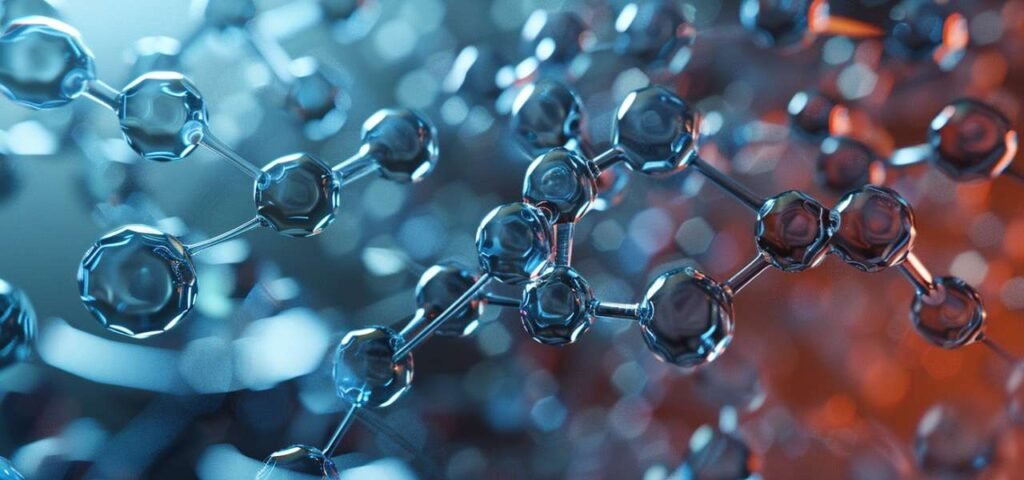1.What is Lithium Battery Electrolyte?
Lithium battery electrolyte serves as the carrier for ion transmission within the battery. It typically consists of lithium salts and organic solvents. The electrolyte facilitates the conduction of ions between the positive and negative electrodes in lithium-ion batteries, ensuring high voltage and high specific energy, among other advantages. Generally, the electrolyte is prepared from high-purity organic solvents, electrolyte lithium salts, and necessary additives in specific proportions under certain conditions.
2.Brief Introduction to Lithium Battery Electrolyte:
The primary electrolytes used in lithium batteries include lithium perchlorate and lithium hexafluorophosphate. However, batteries made with lithium perchlorate have poor low-temperature performance and pose a risk of explosion, leading to their prohibition in Japan and the United States. On the other hand, batteries employing lithium salts containing fluoride exhibit superior performance, pose no explosion risk, and are versatile. Especially those made with lithium hexafluorophosphate offer simple disposal of spent batteries and are environmentally friendly, thus offering broad market prospects for this type of electrolyte.

3.Main Components of Lithium Battery Electrolyte:
(1)Ethylene Carbonate (EC):
Molecular Formula: C3H4O3
Characteristics: Transparent colorless liquid (>35°C), crystalline solid at room temperature.
Uses: Excellent solvent in battery industry, pharmaceuticals, plastics, etc.
(2)Propylene Carbonate (PC):
Molecular Formula: C4H6O3
Characteristics: Colorless, odorless, or slightly yellow transparent liquid, miscible with water and carbon tetrachloride, soluble in ethers, acetone, benzene, etc.
Uses: Polymer operations, gas separation processes, electrochemistry, etc.
(3)Diethyl Carbonate (DEC):
Molecular Formula: C4H8O3
Characteristics: Colorless liquid with slight odor, insoluble in water, soluble in alcohols, ketones, esters, etc.
Uses: Solvent and organic synthesis.
Health Hazards
Route of Entry: Inhalation, ingestion, dermal absorption.
Health Hazards: This substance is a mild irritant and anesthetic. Inhalation may cause headache, dizziness, weakness, nausea, respiratory difficulties, etc. Liquid or high-concentration vapors are irritating. Ingestion irritates the gastrointestinal tract. Prolonged or repeated skin contact is irritating.
Toxicology Data and Environmental Behavior
Toxicity: Estimated to be of moderate toxicity upon entry into the body via the gastrointestinal tract, skin, and respiratory system. More irritating than dimethyl carbonate.
Acute Toxicity: LD50: 1570 mg/kg (oral, rats); Inhalation by humans of 20 mg/L (vapor) for 10 minutes causes tearing and irritation of the nasal mucosa.
Reproductive Toxicity: Intraperitoneal in hamsters: 11.4 mg/kg (pregnant mice), with significant teratogenic effects.
Hazard Characteristics: Flammable; risk of ignition when exposed to open flames or high heat. Vapors are heavier than air and can spread to considerable distances at lower levels; can ignite when exposed to open flames.
Combustion (Decomposition) Products: Carbon monoxide, carbon dioxide.
Emergency Response for Leakage
Evacuate personnel from the contaminated area to a safe zone immediately and isolate them, strictly controlling access. Cut off the fire source. Emergency responders are advised to wear self-contained positive pressure respirators and fire protective clothing. Try to cut off the source of the leak as much as possible. Prevent entry into restricted spaces such as sewers and drains. For small leaks, absorb with inert materials or use an emulsion made from non-combustible dispersants, diluting the washings and putting them into the wastewater system after dilution. For large leaks, construct dikes or dig pits for containment. Cover with foam to reduce vapor hazards. Transfer with explosion-proof pumps to tank trucks or dedicated collectors for recovery or disposal at waste disposal sites.
Protective Measures
Respiratory Protection: When the concentration in the air is high, it is recommended to wear a self-contained filtering gas mask (half mask). If necessary, wear an air respirator.
Eye Protection: Wear safety goggles.
Body Protection: Wear anti-static work clothes.
Hand Protection: Wear rubber gloves.
Others: Smoking is strictly prohibited at the work site. After work, shower and change clothes. Pay attention to personal hygiene.
First Aid Measures
Skin Contact: Remove contaminated clothing and thoroughly wash the skin with soap and water.
Eye Contact: Lift the eyelids and rinse thoroughly with flowing water or saline. Seek medical attention.
Inhalation: Quickly move away from the scene to fresh air. Keep the airway open. If breathing is difficult, administer oxygen. If breathing stops, perform artificial respiration immediately. Seek medical attention.
Ingestion: Drink plenty of warm water, induce vomiting, and seek medical attention.
Fire Extinguishing Method: Spray water to cool the container. If possible, move the container from the fire to an open area. Fire extinguishers: foam, dry powder, carbon dioxide, sand.
(4)Dimethyl Carbonate (DMC)
Chemical Formula: CHO
Dimethyl carbonate (DMC) is a non-toxic, environmentally friendly, and widely used chemical raw material with excellent properties. It is an important organic synthesis intermediate, containing functional groups such as carbonyl, methyl, and methoxy in its molecular structure. It exhibits various reactive properties and is safe, convenient, low-polluting, and easy to transport in production. Due to its low toxicity, DMC is a promising “green” chemical product.
DMC has excellent solubility, a narrow melting and boiling point range, high surface tension, low viscosity, and low dielectric constant. It also has a high evaporation temperature and fast evaporation rate, making it suitable as a low-toxic solvent for the coatings and pharmaceutical industries. As shown in Table 1, DMC not only has low toxicity but also has high flash point, low vapor pressure, and high lower explosive limit in air. Therefore, it is a green solvent that combines cleanliness and safety.
(5)Methyl Ethyl Carbonate
Molecular Weight: 104.1, Density 1.00 g/cm³, colorless transparent liquid, boiling point 107°C, melting point -14°C. Methyl ethyl carbonate is a high-tech, high-value-added chemical product that has emerged in recent years. It is an excellent solvent for lithium-ion battery electrolytes, a new product that has emerged with the increase in production of dimethyl carbonate and lithium-ion batteries. Due to its possession of both methyl and ethyl groups, it has the characteristics of dimethyl carbonate and diethyl carbonate. It is also a solvent for special fragrances and intermediates. Due to the imbalance of methyl and ethyl groups, this product is unstable and not suitable for long-term storage. This product should be stored in a cool, ventilated, and dry place, and stored and transported according to the regulations for flammable chemicals.

(6)Lithium Hexafluorophosphate
White crystals or powder, relative density 1.50. Strong deliquescence; soluble in water, and also soluble in low concentrations of methanol, ethanol, acetone, and carbonate organic solvents. Decomposes when exposed to air or heated. Lithium hexafluorophosphate rapidly decomposes in air due to the action of water vapor, releasing PF5 and producing white smoke.
(7)Phosphorus Pentafluoride
Phosphorus pentafluoride (chemical formula: PF5) is a phosphorus halide compound with a phosphorus atom oxidation number of +5, containing a three-center four-electron bond. Phosphorus pentafluoride is a colorless, foul-smelling gas at room temperature and pressure, with strong irritation to the skin, eyes, and mucous membranes. It is a highly reactive compound that generates toxic and corrosive hydrogen fluoride white smoke violently in humid air. Phosphorus pentafluoride is used as a catalyst for polymerization reactions.
National Standard Number: 23022
CAS Number: 7647-19-0
Alias: Phosphorus pentafluoride
Molecular Formula: PF5
Appearance and Characteristics: Colorless, pungent-smelling gas that emits dense smoke in humid air
Molecular Weight: 126.0
Boiling Point: -84.6℃
Melting Point: -93.8℃
Solubility:
Density: Relative density (water=1) 5.81 (gas); relative density (air=1) 4.3
Stability: Stable
Hazard Label: 6 (toxic gas, inorganic highly toxic substance)
Main Uses: Used for gasification and as a catalyst in polymerization reactions
Environmental Impact
A. Health Hazards:
Route of Entry: Inhalation
Health Hazards: Generates toxic and corrosive hydrogen fluoride in humid air. This substance has strong irritating effects on the skin, eyes, and mucous membranes, and inhalation can cause respiratory inflammation and pulmonary edema.
B. Toxicology Data and Environmental Behavior:
Toxicity: Irritant
Hazard Characteristics: Generates white corrosive and irritating hydrogen fluoride smoke in humid air. Decomposes in water to release highly toxic corrosive gases. Decomposes in the presence of alkalis.
Combustion (Decomposition) Products: Phosphorus oxide, phosphine, hydrogen fluoride
Emergency Handling and Disposal Methods
A. Emergency Response to Leaks:
Promptly evacuate personnel from the contaminated area to upwind locations and immediately isolate. For small leaks, isolate within 300 meters; for large leaks, isolate within 450 meters, and strictly control access. Emergency responders should wear self-contained positive pressure respirators and chemical protective clothing. Attempt to cut off the leak source as much as possible. Ensure adequate ventilation to accelerate dispersion. Leak containers should be properly handled, repaired, and tested before reuse.
B. Protective Measures:
Respiratory Protection: When exposed to vapor, wear a self-contained breathing apparatus (full-face mask) with a self-contained filter. When necessary, wear an air respirator.
Eye Protection: Eye protection is included in respiratory protection.
Body Protection: Wear rubberized chemical protective clothing.
Hand Protection: Wear rubber gloves.
Others: Smoking is strictly prohibited at the work site. Pay attention to personal hygiene.
(8) Hydrofluoric Acid
This substance is regulated by the public security department according to the “Regulations on the Safety Management of Hazardous Chemicals.”
Colorless transparent smoke-producing liquid. It is an aqueous solution of hydrogen fluoride gas. It is weakly acidic and has an irritating odor. Reacts with silicon and silicon compounds to produce gaseous silicon tetrafluoride, but does not corrode plastics, paraffin, lead, gold, or platinum. It can be mixed with water and ethanol. Relative density is 1.298. 38.2% hydrofluoric acid is a binary mixture with a boiling point of 112.2°C. It is toxic, with a minimum lethal dose (rat, peritoneal) of 25mG/kG. It is corrosive and can strongly corrode metals, glass, and silicon-containing objects. Inhalation of vapors or skin contact can cause difficult-to-heal ulcers.
Safety Measures
Leakage: Quickly evacuate personnel from the leak-contaminated area to a safe area and isolate them. Strictly control access. Emergency responders should wear self-contained positive pressure respirators and acid-alkali-resistant work clothes. Do not directly contact the leaked material. Cut off the leak source as much as possible to prevent entry into restricted spaces such as sewers and drains.
Small leaks: Mix with sand, dry lime, or soda ash. Alternatively, wash with plenty of water, dilute the wash water, and discharge it into the wastewater system.
Large leaks: Construct barriers or dig pits for containment; use pumps to transfer to tank trucks or dedicated collectors for recovery or transport to waste disposal sites.
Fire Extinguishing Methods
Flammability: Non-flammable
Extinguishing Agent: Fog water, foam.
Fire Extinguishing Precautions: Firefighters must wear oxygen breathing apparatus and full-body protective clothing.
Emergency Treatment
Inhalation: Quickly move away from the scene to fresh air. Keep the airway open. If breathing is difficult, administer oxygen. If breathing stops, immediately perform artificial respiration. Seek medical attention.
Ingestion: Rinse the mouth with water for the person who accidentally ingested it, and give them milk or egg whites. Seek medical attention.
Skin Contact: Immediately remove contaminated clothing, rinse with plenty of flowing water for at least 15 minutes. Seek medical attention. Alternatively, immediately remove contaminated clothing and rinse with Defenestration (for acids containing fluoride, rinse with Hexafluorine). Seek medical attention.
Eye Contact: Immediately lift the eyelids and thoroughly rinse with plenty of flowing water or saline for at least 15 minutes. Alternatively, use an eye wash with Defenestration (if the acid contains fluoride, use Hexafluorine). Seek medical attention.
Physical and Chemical Properties
Hydrofluoric acid is an aqueous solution of hydrogen fluoride gas, appearing as a colorless transparent to pale yellowish smoking liquid. It has an irritating odor.
It is weakly acidic, but its ionization degree is greater in concentration than in dilute solutions, unlike typical weak electrolytes. It is strongly corrosive and causes significant damage to teeth and bones. It has strong corrosiveness to silicon compounds. It should be stored in sealed plastic bottles.
Obtained by dissolving HF in water. Used for glass etching, cleaning residual sand from castings, controlling fermentation, electro-polishing, and cleaning corroded semiconductor silicon wafers (in mixed acid with HNO3). The relatively strong bond between hydrogen and fluorine atoms prevents complete ionization of hydrofluoric acid in water.

